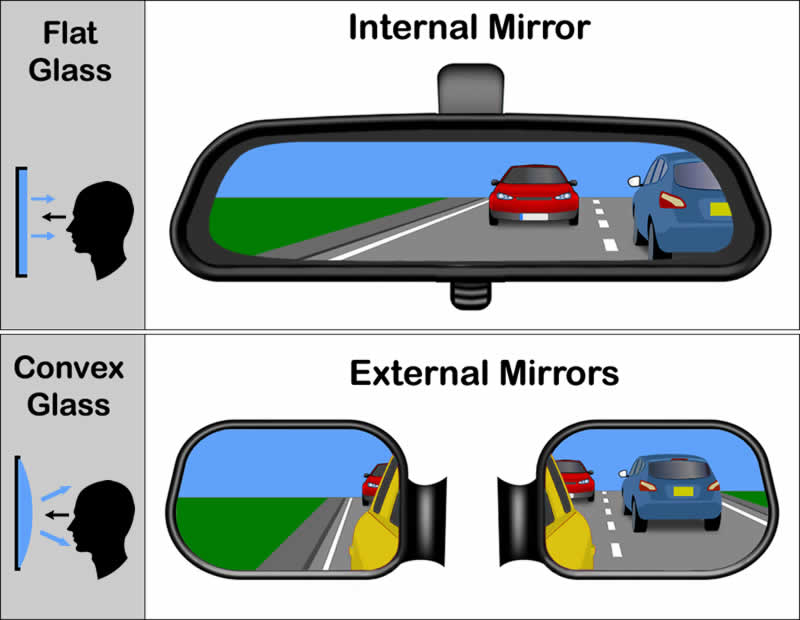Your car’s mirrors provide you with the ability to see what’s going on behind and to the sides of your vehicle. Your car’s mirrors are essential for maintaining a safety bubble around your vehicle and for checking it’s safe before carrying out a manoeuvre. But not all of your car’s mirrors are the same.
Types of Mirrors in a Car Explained
When you start out learning to drive, one thing you’ll soon realise is that you’ll be spending a lot of time looking in your mirrors. Almost everything you do when driving requires a mirror check before doing it and the phrase ‘mirror, signal manoeuvre’ will become a common term.
As you’ll be using your car’s mirrors so frequently, it makes sense to understand how they’re designed to best suit you; the driver. This car mirrors tutorial will explain the different types of glass used in your car’s mirrors and how the different type of glass affects what you’ll see in them.
Before continuing, it’s best to first read the ‘what are the mirrors called in a car‘ tutorial to gain an understanding of what the various mirrors are often referred to as, and the tutorial also shows in diagram the rear field of vision that each mirror provides to the driver.
Comparing Car Mirrors
The car’s internal rear view mirror has flat glass, the same as the mirrors you typically find in your house. When you look in your car’s internal mirror, what you see behind in terms of distance is an exact representation.
The car’s external mirrors, or ‘side’ mirrors have different glass called convex. Convex mirrors are domed, where the centre of the glass bulges towards the viewer. Convex mirrors reflect a wider field of view than a standard flat mirror, but by their nature, they also make objects appear smaller, or further away than they actually are.

In this diagram we can compare the driver’s view of the flat internal mirror and the convex external side mirrors. We can see that the convex glass in the external mirrors provides a wider field of view, meaning we can see more objects in the convex glass compared to the flat glass.
Whilst this is useful for noticing things that otherwise could be missed, it also means that the objects in the side mirrors are smaller and appear further away than they really are.
Why Are Car Mirrors Different?
The mirrors in a car are different in order to reduce blind spots. Blind spots are areas on both sides of the car that the driver cannot see in the mirrors and that require physically turning the head to check. With the external mirrors being convex, the size of the blind spot is reduced.
It’s important to use both mirrors before carrying out a manoeuvre, such as changing lanes for example. First use the internal mirror to observe what’s going on behind and to also gauge the correct distance of following vehicles, then check the applicable side mirror to ensure there’s nothing coming up alongside your vehicle. Then, check over your shoulder into the blind spot before indicating and finally, carry out the manoeuvre.